7800 SW 87 AVE SUITE B-270 MIAMI, FLORIDA 33173
Contact Us
- Home
- Myopia Management
Myopia Management
Understanding Myopia Management:
Myopia, commonly known as nearsightedness, is a prevalent refractive error that causes distant objects to appear blurry while near objects remain clear. Over the past few decades, the incidence of myopia has increased significantly worldwide, particularly among children. Myopia management has emerged as an essential strategy to slow the progression of myopia and reduce the risk of developing severe eye conditions linked to high myopia later in life, such as retinal detachment and glaucoma.
Myopia management involves a comprehensive approach that includes regular eye examinations to track changes in vision, lifestyle modifications such as reducing screen time, spending more time outdoors, and specific treatments such as multifocal eyeglasses, atropine eye drops, and specially designed contact lenses.
Orthokeratology: A Powerful Tool in Myopia Management:
Orthokeratology, also known as Ortho-K, holds a prominent place within myopia management strategies due to its effectiveness in slowing the progression of myopia, especially in children.
Orthokeratology is a non-surgical procedure that uses specially designed, rigid gas permeable (RGP) contact lenses to gently reshape the cornea – the front surface of the eye – while the patient sleeps. The lenses are removed upon waking, providing clear, glasses-free vision during the day. This correction is temporary, but with regular overnight wear, the benefits are consistent.
The primary mechanism by which Orthokeratology aids in myopia management is through its unique lens design that creates a specific pattern on the cornea, effectively controlling the way light focuses in the eye. This pattern has been shown to slow the elongation of the eye, which is the primary cause of myopia progression.
Orthokeratology offers a safe, effective, and reversible alternative to surgical procedures, making it an excellent choice for children and adults alike who seek to manage their myopia actively. It gives the freedom of clear daytime vision without the need for glasses or contact lenses, and most importantly, it provides a means of controlling myopia’s progression, which could otherwise lead to more severe vision problems in the future.
The integration of Orthokeratology into myopia management plans has been a game-changer in eye care, offering hope to millions of people globally for a future with healthier and better vision.
The Procedure:
The Ortho-K procedure is a gradual, non-surgical process that gently modifies the shape of the cornea, the clear front surface of the eye responsible for focusing light onto the retina. This is accomplished by wearing the Ortho-K lenses while you sleep.
Here’s a simplified explanation of how it works: After a thorough eye examination and corneal mapping, your eye care professional designs a set of custom Ortho-K lenses that are the perfect fit for your eyes. These lenses apply a controlled amount of pressure to the cornea, subtly flattening it.
When you sleep with the lenses in, the tear film beneath the lens is redistributed, altering the cornea’s curvature. This change in shape corrects the way light enters your eye, enabling it to focus accurately onto the retina and result in clear vision.
Upon waking up, you remove the lenses and can enjoy clear vision throughout the day without needing glasses or daytime contact lenses. The process is completely reversible and non-invasive, making Ortho-K a preferred choice for those hesitant about eye surgeries or those who are ineligible for refractive surgery.
In essence, Orthokeratology offers the benefits of clear vision without the need for corrective lenses during waking hours or invasive surgery. It is a unique fusion of advanced lens technology and a comprehensive understanding of corneal physiology that enables enhanced visual performance in daily activities.
The Process
Step-by-Step Guide:
The Orthokeratology process is a series of steps meticulously designed to ensure optimal vision correction while maintaining the comfort and health of the eyes. Here’s what you can expect during the Ortho-K journey:
1. Comprehensive Eye Examination: The process begins with a thorough eye examination by Dr. Edward Boshnick. This exam aims to assess your overall eye health, identify any pre-existing conditions, and determine the degree of refractive error (myopia, hyperopia, or astigmatism).
2. Corneal Mapping: The next step involves detailed corneal topography. This non-invasive procedure generates a 3D map of your cornea, revealing its intricate contours and curvatures. This map is integral to the design of your custom Ortho-K lenses.
3. Custom Lens Design and Fitting: Utilizing the data from the corneal topography, your eye care professional will design a pair of custom Ortho-K lenses tailored to your eyes. The design of the lens determines the reshaping of the cornea that will occur during sleep. Once the lenses are ready, a fitting session ensures they sit comfortably and function correctly on your eyes.
4. Overnight Wear: The Ortho-K lenses are designed to be worn while you sleep. Throughout the night, the pressure from the lens reshapes your cornea, correcting the refractive error.
5. Follow-up Appointments: Regular follow-up visits are essential to monitor the progress of your Ortho-K treatment. These visits allow Dr. Edward Boshnick to make any necessary adjustments to your lens design and fitting.
6. End of Therapy and Retainer Lenses: Once the desired vision correction is achieved, retainer lenses are introduced. These lenses maintain the new corneal shape and are usually worn several hours per day or a few days per week, depending on the patient’s unique requirements.
Personalization:
The success of Orthokeratology heavily relies on its personalized approach. The treatment is not a ‘one-size-fits-all’ solution but is carefully tailored to each patient’s unique ocular characteristics and vision needs. This customization ensures an optimal fit of the Ortho-K lenses and effective vision correction.
From the precise measurements taken during corneal topography to the individualized lens design and fitting, every aspect of the Ortho-K process is adjusted to meet the patient’s specific requirements. Additionally, the retainer lens wear schedule is also personalized to maintain the improved vision and accommodate the patient’s lifestyle and comfort. This detailed personalization results in a high degree of patient satisfaction and successful treatment outcomes.
Results & Benefits
Results:
Orthokeratology delivers impressive vision correction results, particularly for those dealing with myopia (nearsightedness) and astigmatism. Patients often observe a significant improvement in their natural vision in just a few days to weeks, marking a drastic shift from their previous dependence on eyeglasses or contact lenses.
Individuals with mild to moderate degrees of myopia can often achieve 20/20 or 20/30 unaided visual acuity, a transformative change for those who previously struggled to discern details without corrective lenses. Even patients with higher degrees of myopia can achieve functional vision that would have previously been impossible without glasses or contacts.
Astigmatism can also be significantly reduced or even eliminated with Orthokeratology, further enhancing visual performance. The advanced techniques and technologies involved in Orthokeratology, including computerized corneal topography and high-tech rigid gas permeable lenses, have significantly improved the results, with many patients achieving their desired outcomes much quicker than ever before.
Real-life Testimonials:
One of the best ways to understand the potential of Orthokeratology is through the words of those who have experienced it. From teenagers thrilled to be able to participate in sports without glasses, to adults who have regained the freedom to enjoy recreational activities unaided, the positive testimonials speak volumes about the potential of this treatment.
Benefits:
Orthokeratology comes with a host of benefits that make it an appealing option for vision correction:
1. Non-Surgical: Unlike LASIK and other refractive surgeries, Orthokeratology is completely non-invasive, eliminating the risk of surgical complications.
2. Rapid Vision Improvement: Patients typically experience noticeable improvement in their vision within days or weeks of starting the Orthokeratology process, making it an efficient approach to vision correction.
3. Convenience: The use of Ortho-K lenses overnight to reshape the cornea and correct vision means no daytime dependence on glasses or contacts.
4. Suitable for All Ages: Orthokeratology can benefit individuals of any age group, including children, making it a versatile solution for a wide range of patients.
5. Enhanced Recreational, Sports, and Occupational Vision: With improved unaided vision, patients can enjoy their favorite activities and meet occupational demands that require sharp visual acuity without the constraints of corrective lenses.
6. Control of Progressive Myopia in Children: Orthokeratology has proven to be one of the most effective methods for slowing down the progression of myopia in children, which can have significant long-term benefits for their eye health.
Orthokeratology for Children
Addressing Progressive Myopia:
In children, myopia (nearsightedness) can often be progressive, worsening over time if left untreated. This condition not only affects their ability to see clearly at a distance but can also increase the risk of certain eye diseases later in life, such as retinal detachment and glaucoma.
Orthokeratology offers a compelling solution to this issue. By using specially designed gas permeable lenses to gently reshape the cornea during sleep, it effectively and safely corrects myopia and curtails its progression. Studies have shown that Orthokeratology can significantly slow down, and in some cases even halt, the progression of myopia in children. This means it can prevent the typical worsening of myopia that occurs as children grow and their eyes continue to change, providing a crucial intervention to maintain their eye health in the long term.
The Importance of Early Treatment:
Early intervention is key when it comes to managing myopia in children. The earlier the treatment begins, the better chance there is to control the progression of myopia and prevent significant vision loss. Starting Orthokeratology in childhood can not only enhance a child’s ability to participate in school, sports, and other activities without reliance on glasses or contacts, but also protect their vision in the long run.
Orthokeratology provides a safe and effective alternative to traditional myopia control methods, with the added benefit of providing immediate improvement in visual acuity. By choosing Orthokeratology, parents can take an active role in protecting their children’s vision and set them up for a lifetime of better eye health.
Is Orthokeratology for You?
Who Can Benefit:
Orthokeratology can benefit a wide range of individuals. It is particularly helpful for those with mild to moderate myopia (nearsightedness) and astigmatism, including children and adults who want to enjoy clear vision without the daily hassle of glasses or contact lenses. It’s also an excellent choice for athletes or those with active lifestyles who find glasses or regular contact lenses inconvenient or restrictive.
Moreover, individuals with progressive myopia who want to halt the worsening of their vision may see significant benefits from Orthokeratology. People who spend a lot of time in front of screens or in visually demanding occupations may also find relief with this treatment.
However, it’s important to note that Orthokeratology may not be suitable for everyone. The treatment requires a level of commitment to the regular care and maintenance of the lenses. People with certain eye conditions, severe dry eyes, or high levels of refractive error may not be ideal candidates for Orthokeratology.
Consultation:
To determine if Orthokeratology is the right choice for you, we highly recommend scheduling a consultation with Dr. Edward Boshnick. With his extensive experience in the field of Orthokeratology, he can assess your unique visual needs and eye health and provide a comprehensive understanding of what this treatment can offer you. During the consultation, Dr. Boshnick will answer any questions you have and discuss whether Orthokeratology is the most suitable approach to help you achieve better vision and improved eye health. Your journey towards clearer, more natural vision begins with this first step.
Your Vision, Our Priority:
Schedule Your Consultation Now
Frequently Asked Questions
Orthokeratology, also known as Ortho-K, is a non-surgical treatment for myopia (nearsightedness) and astigmatism. It involves the use of specially designed rigid gas permeable (RGP) contact lenses worn overnight to gently reshape the cornea, the front surface of the eye. As a result, the refractive error is temporarily corrected, allowing for clear, glasses-free vision during the day.
Orthokeratology can be beneficial for people of all ages, particularly those with mild to moderate myopia and astigmatism. It’s an excellent option for those who participate in sports, work in dusty environments, or simply desire freedom from glasses or daytime contact lenses. It is also particularly effective in managing progressive myopia in children. However, it may not be suitable for everyone. Dr. Edward Boshnick can determine your suitability during a comprehensive eye examination.
The speed of vision improvement varies depending on the individual’s eye condition. Most patients notice significant improvement within a few days to a couple of weeks. However, the optimal effect might take several weeks to achieve. During this period, temporary lenses may be needed for clear vision.
While Orthokeratology doesn’t cure myopia, numerous studies have shown it to be effective in slowing down its progression, especially in children. By controlling the way light focuses on the retina, Ortho-K lenses can reduce the elongation of the eye, which is often associated with myopia progression.
The Ortho-K lenses are designed to be worn during sleep, which means the wearer is typically unaware of them. It might take a few days to get used to placing and removing the lenses, but most people find the process becomes straightforward with a little practice. As a specialist in this field, Dr. Edward Boshnick will ensure your lenses are correctly fitted for optimal comfort and effectiveness.
Orthokeratology is considered safe when properly managed and monitored by an experienced eye care professional like Dr. Edward Boshnick. However, as with any contact lens use, there are risks, including infection and corneal damage. These risks can be minimized by proper hygiene, correct handling of the lenses, and regular follow-up visits with your eye care provide
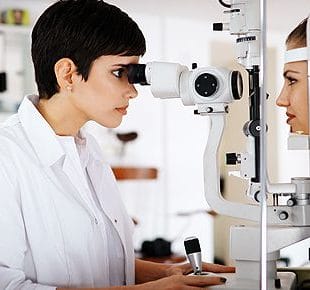
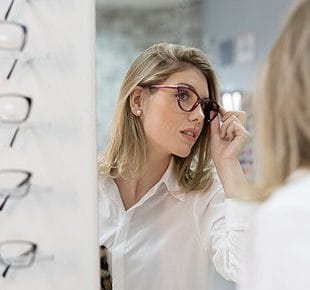
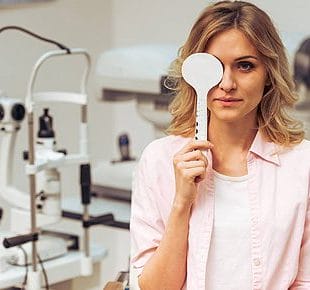
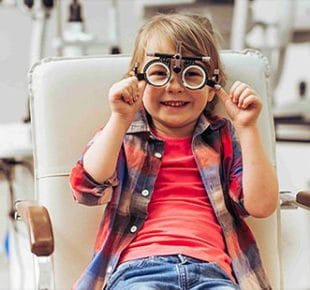
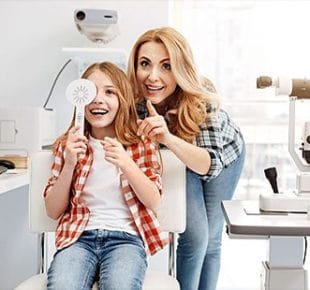

Schedule Your Consultation with
Dr. Boshnick
-
-
-
7800 Sw 87 Ave Suite B-270
Miami, Florida 33173
